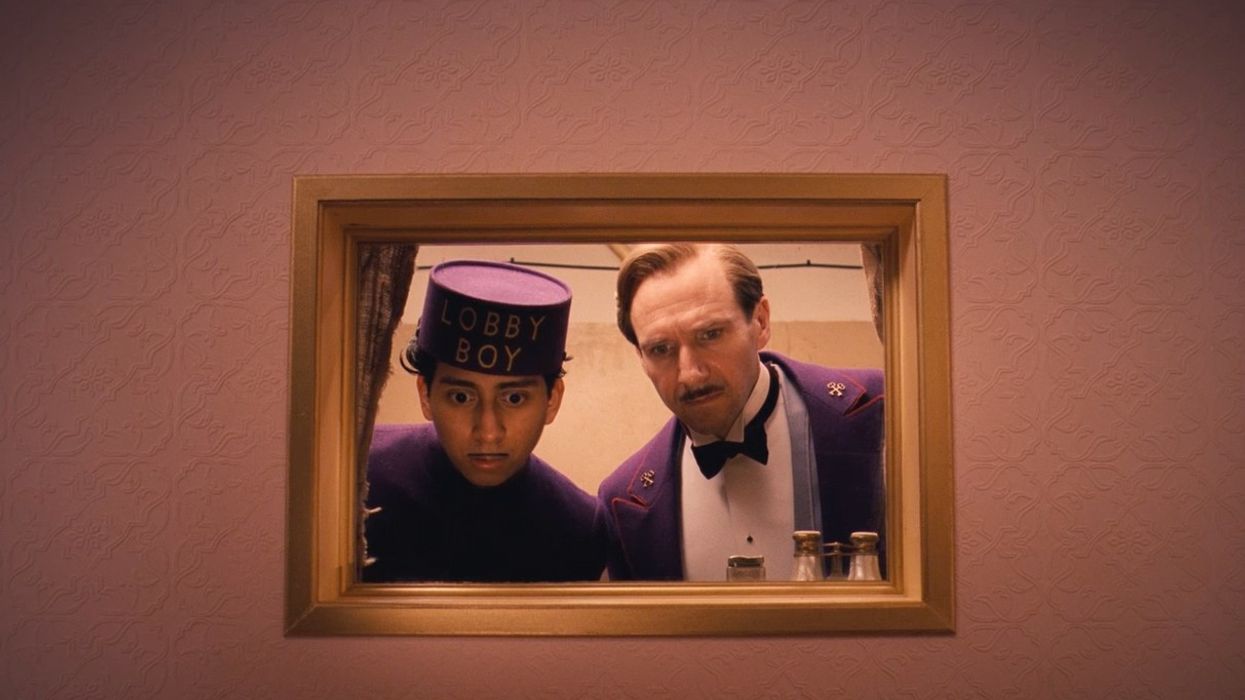Watch: Wes Anderson's Windows to the Soul
Wes Anderson knows the importance of architecture in films.

We might thrill at the chase in a movie like Halloween or Scream, but think, for a second: Without a door to slam, without a closet to hide in, without a roof to jump off of, without a long hallway with sharp corners to turn... how scary would these films be? A film such as The Hateful Eight, for instance, owes a great deal of its eccentricity to the odd openness of the location where it occurs, and the fact that all of the characters are in the same space for a prolonged period of time. And The Shining... well, its setting speaks for itself.
Architectural features assume tremendous significance in a film. They're tools to help characters and viewers alike move through and experience a story. And no one knows this better than Wes Anderson.
There are many, many moments in Wes Anderson's films when characters simply look out of windows, gaze at landscapes, or stare into the frame.
This short, sharp, taut, and clear video essay by Clara Podlesnigg from Fandor demonstrates this potential in architecture by looking at the ways the ever-parseable Wes Anderson uses windows, from his very first film to his most recent. According to film theorist David Bordwell, Anderson uses the "planimetric approach," in which his films attain "a somewhat awkward formality, a sense that we are looking from a distance into an enclosed world that sometimes looks back at us."
What you learn from this video essay could be applied to your own story, or it could simply enhance your understanding of what it is Wes Anderson is actually doing in his films. (Below, we break it down.)
Looking out
There are many, many moments in Anderson's films when characters simply look out of windows, gaze at landscapes, or stare into the frame. It would be easy to ask what, for instance, Gustave is looking for, specifically, when he looks out the front window of the Grand Budapest Hotel. The answer might very well be "nothing." It's okay to allow characters in films to do that, every now and then—to simply allow them to be, for a moment, without any pressures to move a plot forward. This indulgence Anderson gives his characters is one of the earmarks of his work, and among the qualities that make it memorable.
Escaping
The act of jumping out a window can serve as a portal between one plot point and another, or it can help to build structure. When Eli Cash slips out a window in The Royal Tenenbaums, he is escaping from detection in a tryst with Margot Tenenbaum. But Anderson is also using the gesture to build Cash's character: shady, eccentric, hard to access, hard to pin down. Many movies have hinged on scenes involving windows, from the ultra-obvious Rear Window to The Hudsucker Proxy to Ada to Salem's Lot. In all of these films, the window is the site of yearning, of desperation to be somewhere else—anywhere—whether that means being alive or dead.
Closing off
A window can easily be peered through, but it can just as easily be covered up. Looking into a window implies voyeurism and curiosity, while closing the curtain could imply a number of things. When Max Fischer closes his bedroom curtain in Rushmore, we have the sense he is walling himself in; when the travelers in The Darjeeling Limited close their curtains, the audience feels that their deranged psyches are going to keep churning, even behind the curtain's barrier. A curtain, then, suggests a false closure. Within a story, you can never entirely close off further curiosity about what's going to happen next; the most you can do is set up a boundary between one plot point and the following. As a result, the curtain represents the idea that the characters on screen can never entirely escape viewers' eyes—and minds.
What other uses can you see for windows in film? How do you think this piece helps us understand Wes Anderson? Let us know your thoughts in the comments!
David Bordwell film theory reference sourced by Justin Morrow.

 'Anora'Neon
'Anora'Neon Annie Johnson Kevin Scanlon
Annie Johnson Kevin Scanlon









